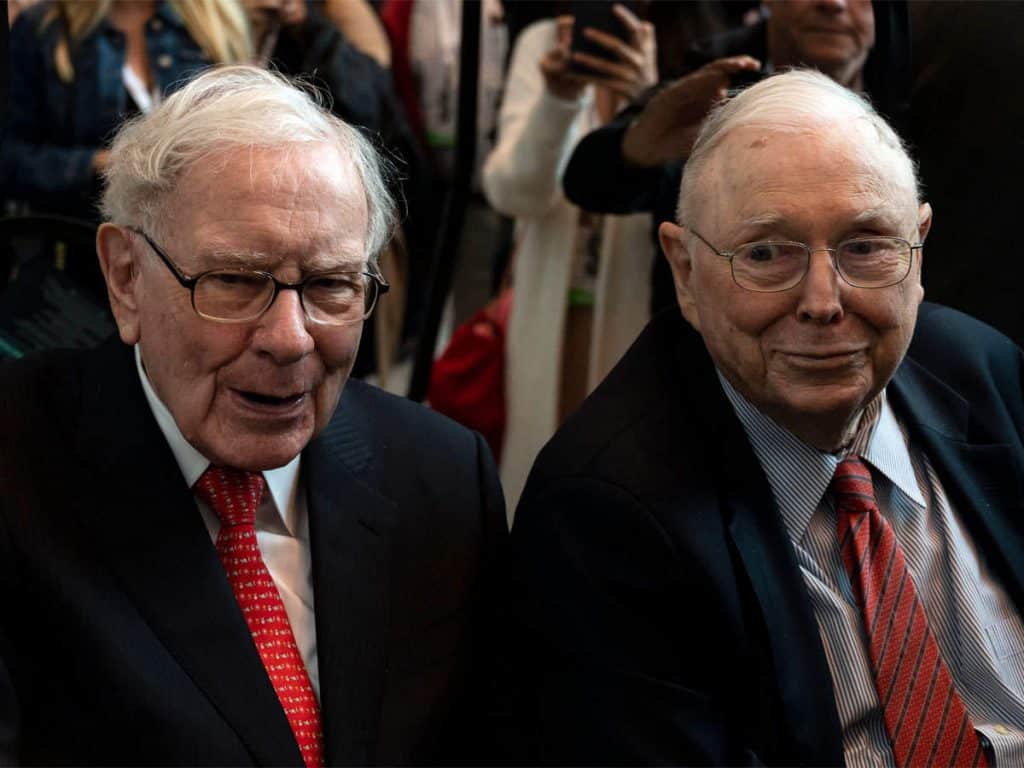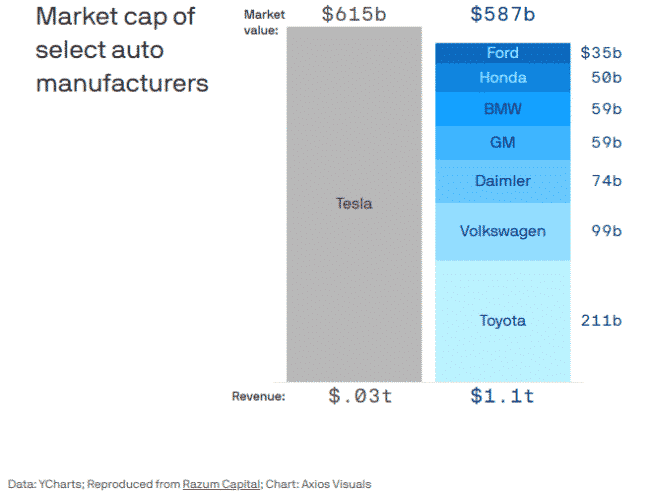I want you to walk away with two wonderfully human—and perhaps contradictory—ideas from today’s article. They’ll shed important light on how manias and bubbles work.
The first idea is that humans are notoriously bad at understanding change. The future is a foggy mess. We can be experts in one field and know nothing in others.
Napoleon is considered one of the greatest battlefield tacticians of all time. His French forces defeated larger, stronger armies by outwitting them. He was a once-in-a-generation military leader.
But when he was first presented with the idea of a naval vessel powered by steam, Napoleon wrote:
How, sir, would you make a ship sail against the wind and currents by lighting a bonfire under her deck? I pray you, excuse me, I have not the time to listen to such nonsense.
Napoleon, on steamboats
Great on the battlefield. Missed the boat on steamboats. Examples like this are everywhere. Lord Kelvin—considered one of history’s greatest physicists—wrote in 1895:
Heavier-than-air flying machines are impossible.
Lord Kelvin
Kelvin played huge roles in developing the laws of thermodynamics and electricity & magnetism. But he didn’t think we had the engineering prowess to make airplanes. It took eight years for Kelvin to be proven wrong by the Wright brothers.

Thomas Edison hated alternating current and thought it was pointless. But it now dominates the world. Bill Gates thought 32-bit operating systems were impossible. Four years after saying as much, his company Microsoft released the first one to market.
You can be a certifiable genius with a lifetime of success. That success doesn’t preclude you from being clueless about an idea that, in retrospect, should have been obvious.
This first idea applies to individuals. But today’s second idea applies to crowds.
This second idea is that humans are hard-wired to be swept up by new ideas—rationally or irrationally. Being an early adopter is a status symbol. And humans enjoy that status. We want to be members of groups, tribes, movements. These new idea movements have lead groups of humans to make funny, stupid, or terrible mistakes.

In broad terms, we’d call such an event a fad or a mania. Common examples from history include religious cults and witch-hunting (e.g., Salem, Massachusetts). “Leaders” have predicted the end of the world—and convinced others to follow them—for the full length of written human history. When a mania deals specifically with money or investing, we call them bubbles.
Before diving deeper into manias and bubbles, keep this in mind: these two ideas today often accompany one another.
(Potentially) world-changing ideas create upswells of public support and sentiment. The optimism starts a movement. But these big ideas also attract big criticism. Experts weigh in with a full spectrum of opinions—many of which end up being dead wrong.
All Bubbles Are the Same
“History doesn’t repeat itself, but it rhymes.” Mark Twain’s pithy wisdom certainly applies to the history of manias. Past manias share so much in common, and it begs the questions, “Are there movements today that appear to rhyme with bubbles of the past?”
Kindleburger’s 5 Phases of Bubbles and Manias
In Manias, Panics, and Crashes, author Charles Kindleburger describes 5 discrete phases of manias. Those steps are:
- Displacement
- Expansion
- Euphoria
- Crisis
- Contagion
Displacement is a new idea coming to market with the potential to change the status quo. This early idea is typically legitimate and well-meaning—two attributes that we do not use to describe typical bubbles.
At the root of all financial bubbles is a good idea carried to excess.
Seth Klarman
Expansion is the when the idea spreads and gains popularity. In investing terms, prices start to increase.
Euphoria is “get rich quick” on meth. It’s all rewards and no risk. Not only has the technology’s narrative taken hold in public, but individual Average Joes all seem to know someone who has made money hand-over-fist. This inflates bubbles, and then…
Crisis occurs when euphoria’s proverbial music stops. Investors scramble to find a chair or safe harbor, but they are like “an overcrowded movie theater with a small door.” People will pay just about any price to squeeze through the door a.k.a the asset price collapses. Bubbles always burst.
Contagion is the flip side of euphoria. Just as the good times were unrealistically good, investors often over-react to the crisis and continue selling into unrealistically bad prices.
Charles Kindleburger writes that all bubbles see these same five phases because they all share one important driving force:
Human nature.
The irrational human brain is the impetus behind all bubbles. We get excited about something new. Then we get excited that the others are excited. Euphoria sets in. Eventually, the euphoria wanes, and we realize our own mistake. We feel regret, perhaps a worse low than the euphoria was high.

The Dot Com bubble followed this pattern. So did Tulip Mania in Renaissance Holland. And today, we must ask—are there bubbles lurking on our current horizon?
Enjoying this article? Subscribe below to get new articles emailed straight to your inbox
Today’s Bubbles?
Cryptocurrency and Tesla are two assets that are popular to identify as present-day bubbles. How do they fit the classic bubble narrative?
Both are new displacing technologies.
Blockchain seems to have the potential to change aspects of our digital world. It brings a new level of security to contracts, agreements, and similar transactions. Will crypto be used as day-to-day money? Will it be used as a long-term “store of value.” The jury is still out.
Tesla is on the cutting edge of automotive transportation. Whether electric vehicles, driverless vehicles, or a yet-to-be-invented technology, Tesla is pushing boundaries.
Both crypto and Tesla have zealous followers. An optimist would call them fans. A pessimist would call them cultists. It would appear that the expansion phase of their potential bubbles has been strong.

Are we in euphoria? Depends on who you ask.
Plenty of investors are betting long on crypto. But not everyone. Charlie Munger—Warren Buffett’s highly-respected partner at Berkshire Hathaway—infamously said in that Bitcoin was:
“…disgusting and contrary to the interests of civilization.”
Charlie Munger
Will this be another famous example of an otherwise expert getting a new technology heinously incorrect?

While Tesla as a business appears on stable footing, is the stock itself euphoric? Could it be a bubble?
It’s a disruptive technology that has spread like wildfire over the past decade. And then 2020 happened. The stock jumped 695% in one year. Was this a legitimate change in the fundamental prospects of the company? Or was this euphoria?
Michael Burry—of The Big Short fame—is betting that it’s euphoria. He recently publicized his $530 million bet against Tesla. Burry isn’t saying that the company is poorly run, per se. Instead, he’s suggesting that Tesla investors are irrationally exuberant and that the market needs to (and eventually will) correct its mistakes.
Burry has been right before. He’s an investing expert. But could he be wrong this time? It’s possible.
Let’s look at Steve Eisman, another famous character from the Big Short. Eisman was shorting Tesla from 2018 to 2020, believing that the stock was overvalued then. It certainly appears Eisman was wrong. Either that, or the market was able to remain wrong (e.g. overpriced) far longer than Eisman’s bet was able to remain solvent.
Bubbles can last years longer than they “should.” Even if we are seeing bubbles before our eyes, it’s tough to predict how and when they’ll end.
What Do I Think About Crypto and Tesla?
As I disclosed in my 2021 Quarter 1 personal financial review, I own a minimal amount of bitcoin via a mutual fund I can purchase on Fidelity. And I own Tesla too, but only through the various index funds I own. That is, I don’t own any Tesla stock outright by myself.
I think these assets represent technologies that could have long-lasting ramifications on our way of life. There’s potential for outsized profit. But I’m not willing to match the crowd’s apparent exuberance, especially when it’s already “the talk of the town.”
If you hear about Bitcoin from your Uber driver or favorite blogger, it’s probably too late for you to make your profit. The future returns are already priced into the current price. This is another common characteristic of bubbles.
Amazon vs. Pets.com
When I see Tesla and Bitcoin, I consider the stories of Amazon and Pets.com.
In Spring 2000, you could’ve bought Amazon for $70 a share. Pets.com was trading for $14 a share. One year later, Amazon was trading for $10 and Pets.com for less than a buck. Pets.com quickly filed for bankruptcy and Amazon, well…
With the benefit of hindsight, it’s clear that Spring 2000 prices were:
- For Amazon: overly enthusiastic (at that time), but based upon solid future upside
- For Pets.com: completely irrational, based on someone pasting “.com” onto the end of a glorified local pet store
There’s a sliding scale between Amazon and Pets.com. A gradient of choices. And when I think of Tesla and Bitcoin, I ask myself: where on that gradient do they lie?
The trading favorites of 1928 were high-priced, untried, and unseasoned stocks that made one wonder whether the public did not think that the higher the price the better the stock.
Edwin Lefevre
I’m not suggesting that either asset will “blow up” and lose 90% of its current price. But I think it’s possible (if not probable) that they’re overpriced.
In some ways, cryptocurrencies rhyme with the Dot Com era, where adding “coin” or “blockchain” to an otherwise stagnant business model somehow 10x’s your valuation. It’s just like adding “.com” to an otherwise average store front or putting lipstick on a pig.
And with Tesla…yes, they make a great product. But other companies will surely compete with Tesla, and it might be sooner than we realize. Are we sure Tesla is worth more than Ford, Honda, BMW, GM, Daimler, VW, and Toyota combined?

What Should You Think?
If you want my opinion, it’s this:
Do your best to ignore the yelling. Try to find rational conversations, listen to different opinions, and make up your own mind (hint: this suggestion applies to everything else you do in life, too).
If you think crypto is your golden ticket to getting rich quickly, then I wish you luck. I think you’ll need it.
But let’s say you have a more traditional investing mindset.
- You understand that prices will ebb and flow in the future
- You might even believe that these assets are currently overpriced
- But your time horizon is measured in decades, not weeks.
If this is your mindset, then you probably also understand the value of diversification. You also understand how emotional investing is problematic. You probably have made safe and measured choices in all other aspects of your investing life.
Then sure, I support you going for it! Follow your gut on this…because you’ve already proven that you can use your head.
If crypto and Tesla are bubbles, then the future crises will deflate on you slowly. It won’t explode in your face.
And if crypto and Tesla truly are in their infancy of changing the world, then you’ll have set yourself up to receive outsized returns from a small investment.
We might be right or might be wrong. If these are two bubbles, only time will tell.
Thank you for reading! If you enjoyed this article, join 8000+ subscribers who read my 2-minute weekly email, where I send you links to the smartest financial content I find online every week.
-Jesse
Want to learn more about The Best Interest’s back story? Read here.
Looking for a great personal finance book, podcast, or other recommendation? Check out my favorites.
Was this post worth sharing? Click the buttons below to share!
great vlog bro
Thanks a bunch!
You’ve gotta think so much of Tesla’s future earnings are already priced into the stock. Traditional car companies will accelerate their electric vehicles and level the playing field. Right? Right?
There’s no question there are bubbles all over the place right now. My problem is that I recognize the bubble and try to make a quick buck off of it. Usually that means I end up holding the bag haha
Hi IF, good to hear from you! My thoughts:
Yes, yes, and yes!
1) It feels like many investors are forgetting that other car companies have the opportunity to compete for Tesla’s market share
2) Identifying a bubble is one difficult thing. And timing the bubble is even harder.